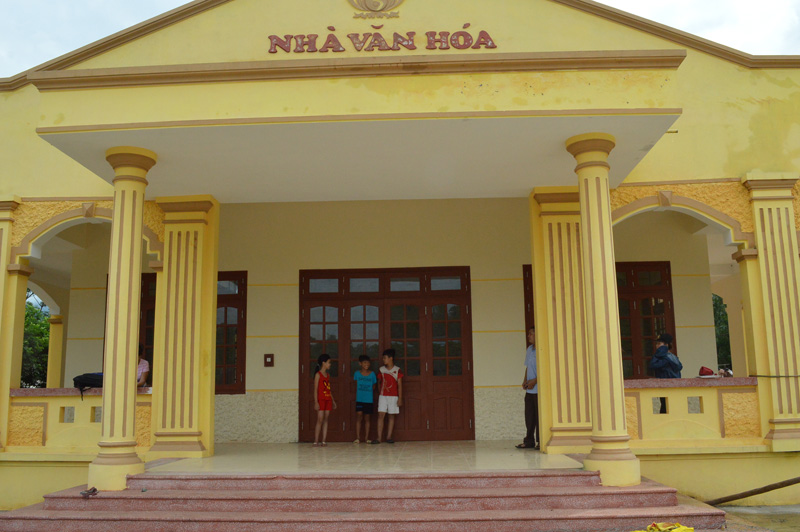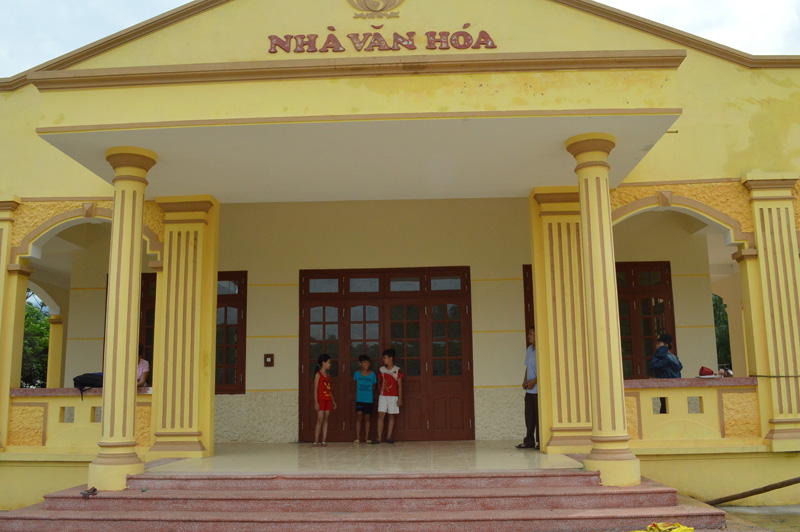


 The Cultural House
of Mong Hoa Commune (Hoa Binh City) has been built meeting the standards,
fulfilling the needs of community activities of the local people.
The Cultural House
of Mong Hoa Commune (Hoa Binh City) has been built meeting the standards,
fulfilling the needs of community activities of the local people.
In the whole province there are 1,443 out of the 1,482 cultural houses of the villages, the hamlets, the residential areas, reaching 97.3%, of which, there are 607 cultural houses of the hamlets and the residential areas meeting the standards prescribed by the Ministry of Culture, Sports and Tourism. 109 out of the 131 communes have cultural houses, reaching 83%, of which, 88 commune culture houses meet the standards prescribed by the Ministry of Culture, Sports and Tourism. There are 103 sports zones in the communes, the wards and the towns. 10 out of the 10 districts and the city have cultural houses, reaching 100%.
There are 131 bookcases of the communes, the wards and the towns and there are 131 communal cultural post offices. There are 10 district-level mobile communication teams and 1,482 propaganda-cultural teams in the villages, the hamlets, and the residential groups operating regularly.
The system of cultural and sports institutions at all levels, especially the cultural and sports institutions in the villages, the hamlets and residential areas has made an important contribution to meeting the needs of exchange, entertainment and enjoyment of the spiritual culture and the health training of the people, improving the quality of the movement "All people unite to build a cultural life” in the localities ...
In 2019, in the whole province there were 1,264 out of the 1,482 "Cultural Villages” reaching 85.2%. 179,922 out of the 214,465 households won the title The Cultural Family”, equaling 83.8%. In the whole province there are 89,679 households reaching the title of "The Cultural Family” for 3 consecutive years. 55,081 households have won the title of "The Cultural Family” for 5 consecutive years or more. 32.2% of the population practice physical exercises and sports regularly, 24.5% of the households do physical exercises and sports and there are 805 sports clubs.
The investment, management and use of the cultural and sports institutions can basically meet the needs of learning, exchanging, enjoying, preserving the cultural value and training physical training and sports of all the classes of people in the province. In fact, many good values of the nation of Hoa Binh province have been preserved, nurtured and promoted from generation to generation through community activities.
In order to promote more effective use of the system of the cultural and sports institutions at the grassroots levels, it is necessary to invest in upgrading small or degraded works so that they can be able to exploit and use for a long time, serving the needs of the cultural activities and doing exercises to improve the people's health. It is necessary to give priority to allocating the budget for the investment in the cultural and sports institutions for extremely difficult communes and villages. It is suggested that the socialization should be stepped up and the investment of the organizations, the individuals and the enterprises should be called for in building cultural and sports institutions and entertainment areas for children.
There must have mechanisms to encourage the promotion of autonomy in the management, exploitation and use of the cultural and sports institutions such as the cultural houses, the stadiums at the commune levels, in the villages and the residential areas to improve the operating efficiency to better serve the people's cultural and spiritual life.